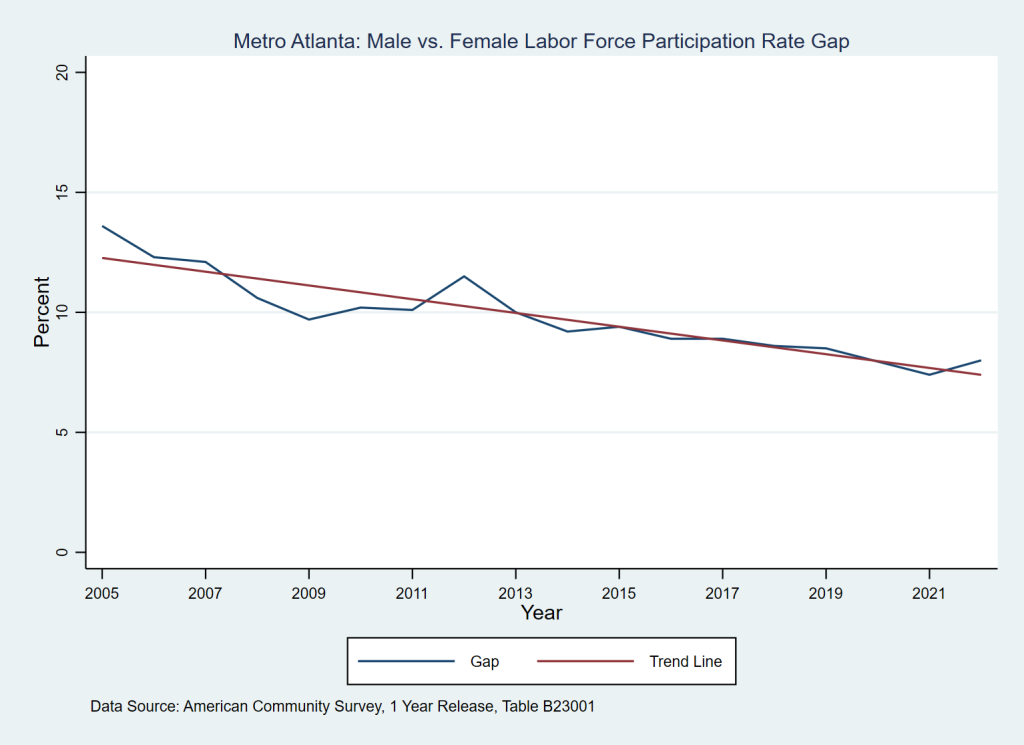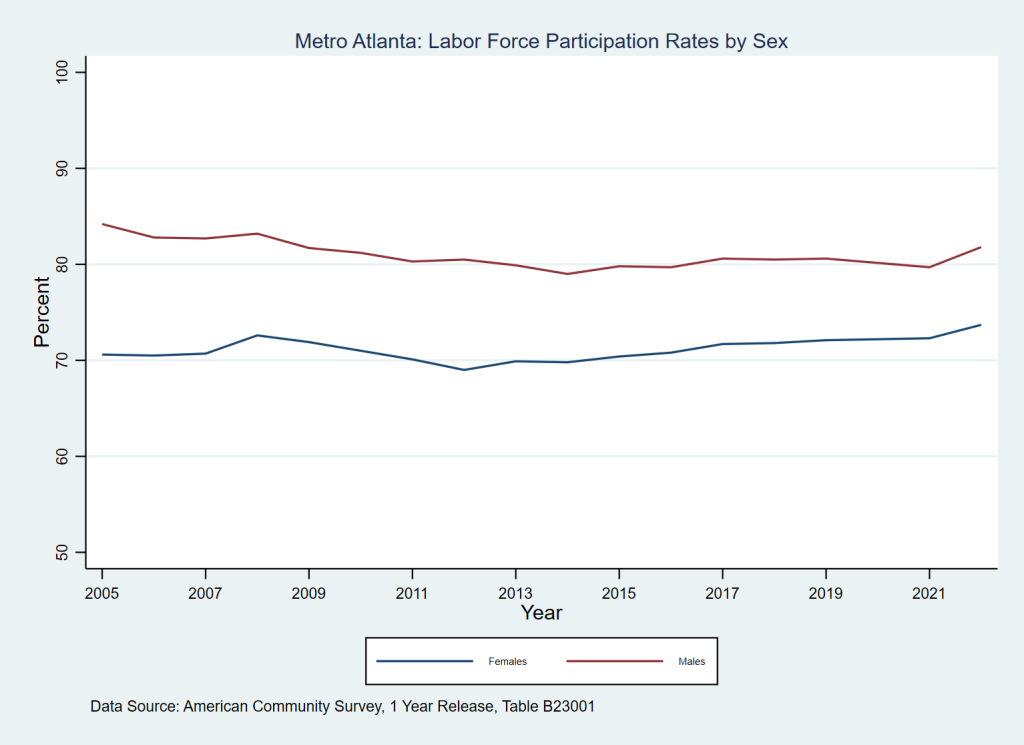In keeping with its origins, it is appropriate to commemorate International Women’s Day with an examination of women in Atlanta’s labor force. How has female labor force participation changed over the last decade and a half? And how does it compare to male participation rates?
To address these questions, we turn to data from the American Community Survey, which the Census Bureau has conducted every year since 2005.[1] Figure 1 examines labor force participation rates[2] for females and males ages 16-64 in the Atlanta Metropolitan Area over the period 2005-2022:
Figure 1: Labor Force Participation Rates by Sex for Metro Atlanta
As this figure shows, labor force participation rates for females and males generally track together over time. It also shows that labor force participation for both groups increased in 2022 above pre-pandemic levels. At 73.7%, the female labor force participation rate is at its highest level in the American Community Survey era, while at 81.7%, male labor force participation is at its highest point since before the Great Recession.
Figure 2 focuses on the difference in percentage points between male and female participation rates:
Figure 2: Gap in Labor Force Participation Rates for Metro Atlanta

This figure shows that with the exception of a small bump in the early 2010s, the participation rate gap has narrowed fairly consistently over time. It has fallen from almost 13.6 percentage points in 2005 to a bit over 8.0 points in 2022.
Why does this gap exist? In high-earning families, some women may choose not to work outside the home,[3] while a lack of access to affordable quality childcare prevents many other women from joining the paid labor force. Metro Atlanta and the nation as a whole currently suffer from a labor crunch. Finding ways to bring these women into the labor force would help ameliorate this problem.
Footnotes
[1] The lone exception is 2020; the American Community Survey suspended operations for most of that year due to the pandemic.
[2] Labor force participation includes people who are unemployed but actively seeking employment in addition to those currently employed.
[3] Right or wrong, unpaid work (including inside the home) does not meet the definition of labor force participation.


